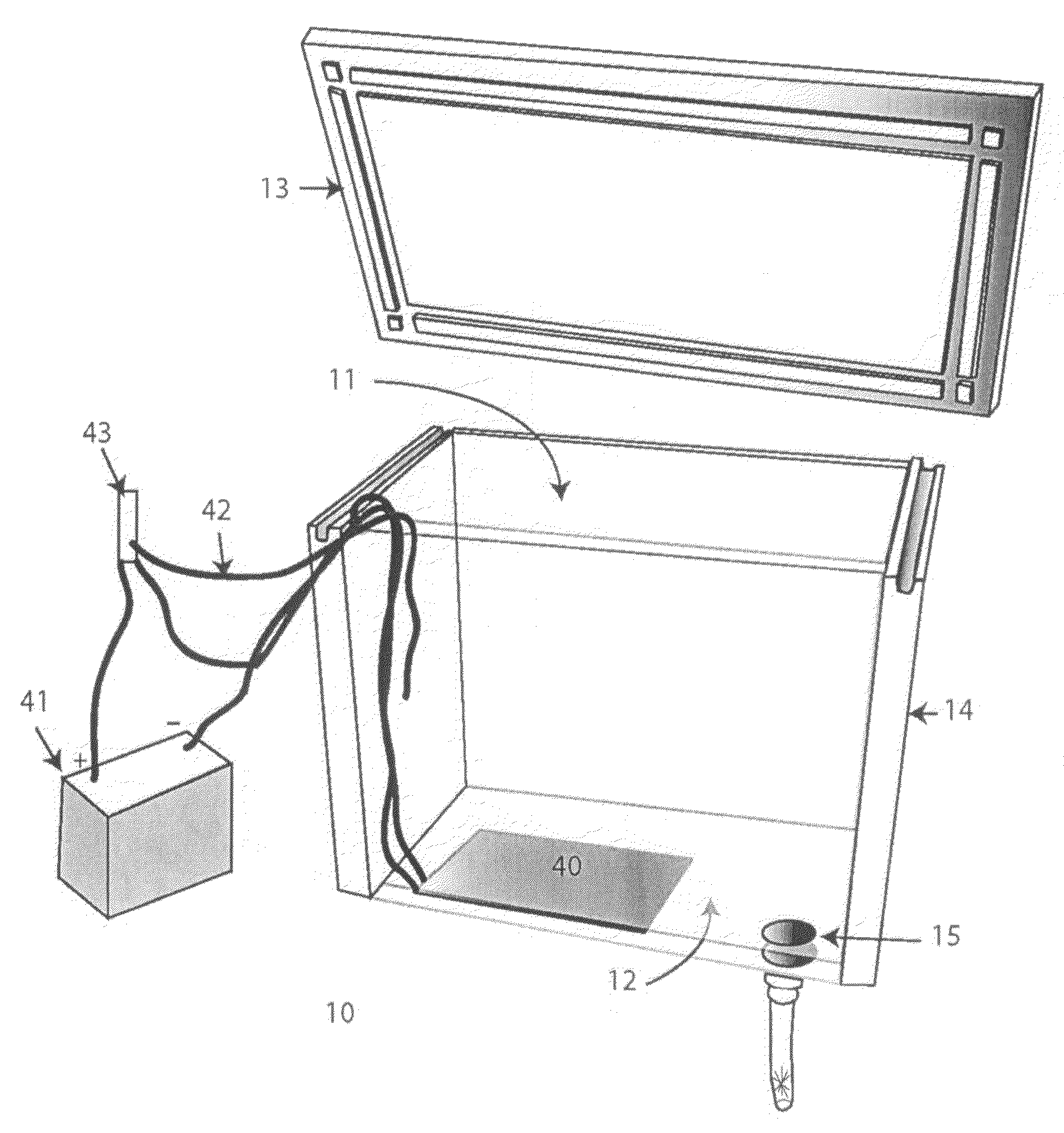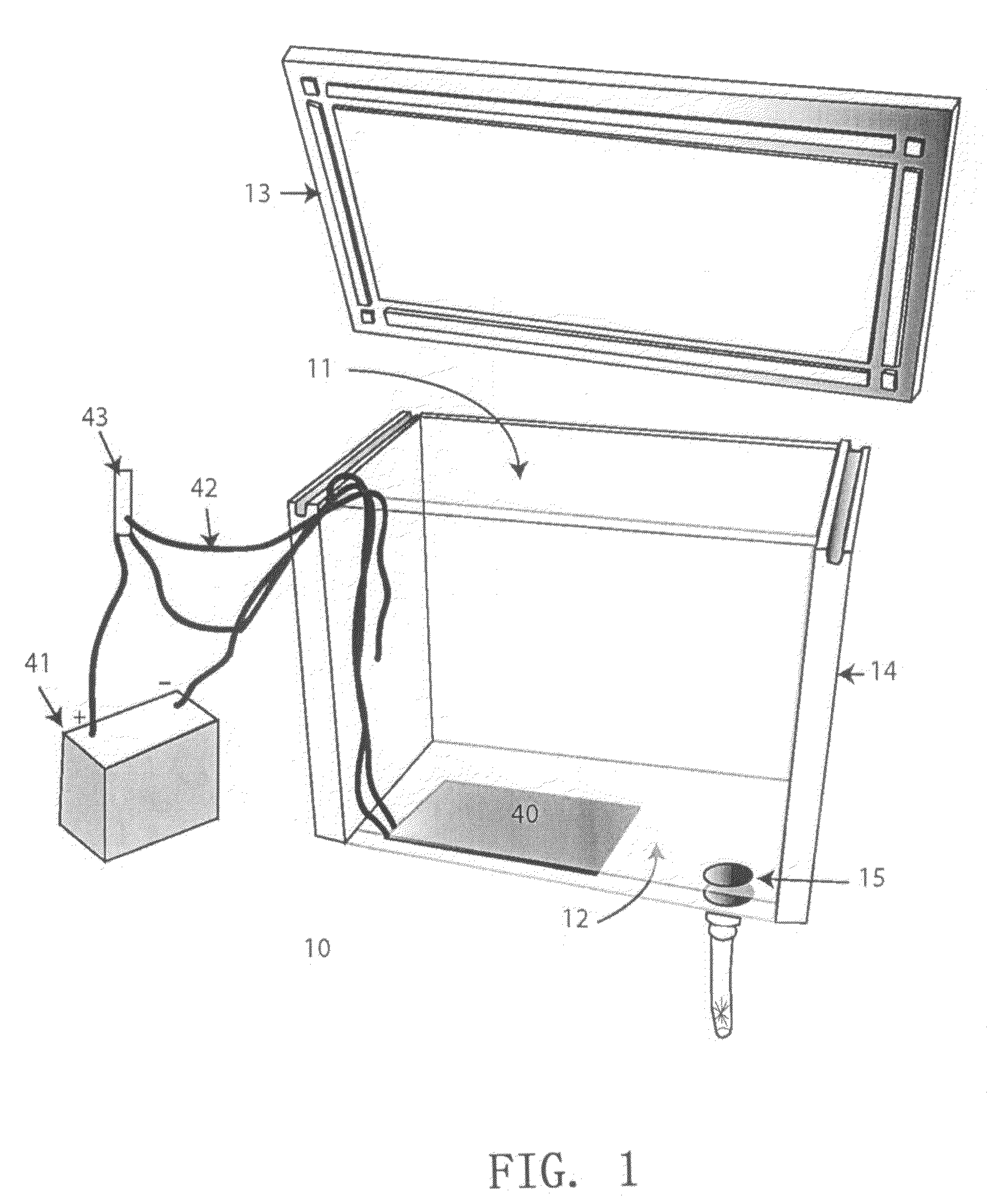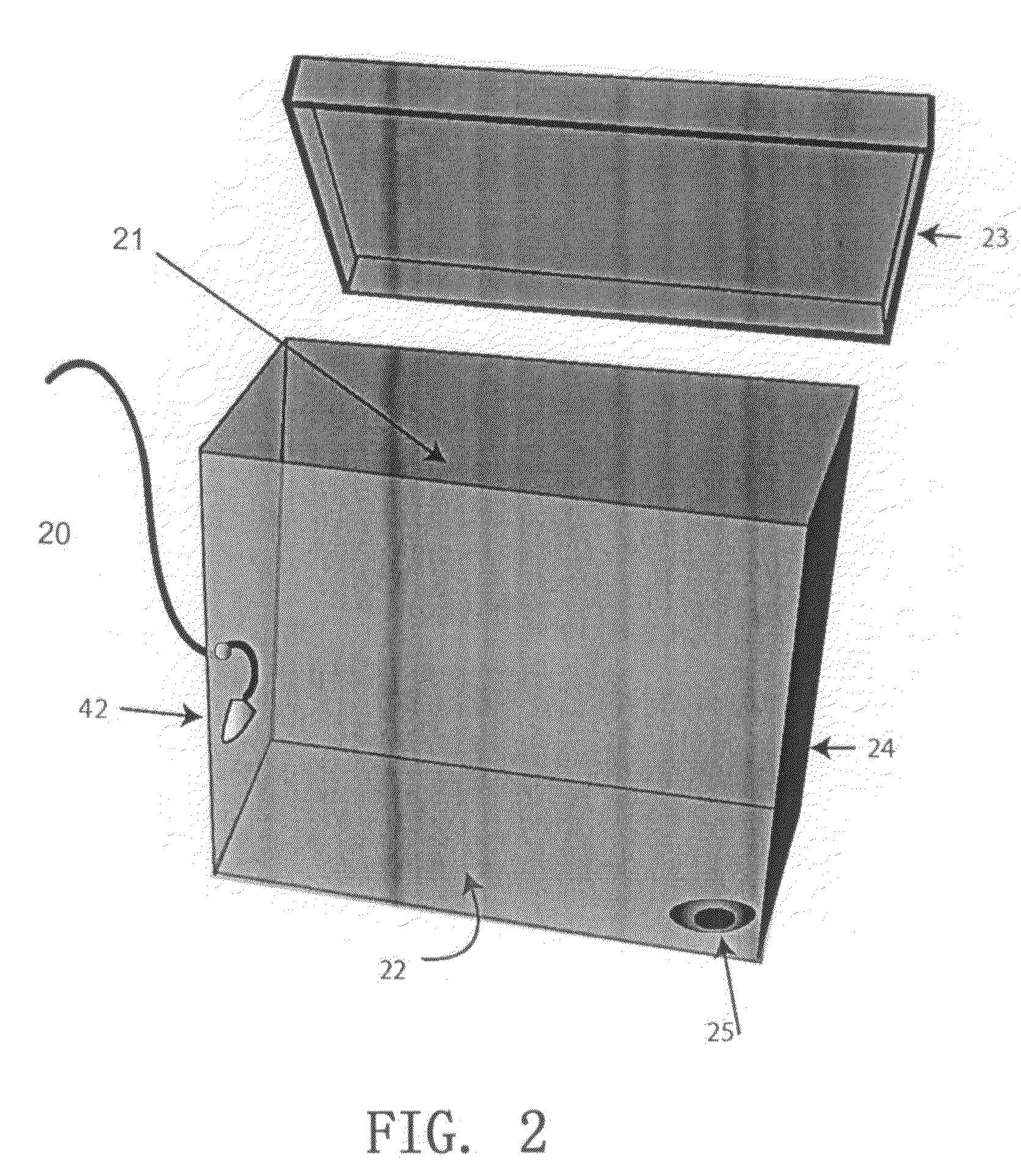Solitary bee emergence box
a technology of incubators and bees, applied in the field of field incubators, can solve the problems of precipitous decline in the number of honey bees available for pollination, difficult for the honey bee to successfully pollinate the flower, and only provide marginal pollination for bees, so as to promote a more synchronous timing of the emergence of the population, reduce the susceptibility to disease, and reduce the time for emergen
- Summary
- Abstract
- Description
- Claims
- Application Information
AI Technical Summary
Benefits of technology
Problems solved by technology
Method used
Image
Examples
example 1
[0043]The heated emergence box of this invention was evaluated for bee emergence in the field to demonstrate that heating the boxes early in the day would allow females to gain more heat units than females left at ambient temperatures and consequently emerge sooner and faster (i.e., over a few days).
Materials and Methods
Bee Populations:
[0044]Study populations were the progeny of northern Utah bees flown in almond and apple orchards in California and Utah, respectively. These bees nested in wood blocks with paper drinking straw inserts (15 cm long and 8 mm in diameter). Nests obtained from the California orchard were pulled from the wood blocks, brought to the ARS Bee Biology & Systematics Laboratory in Logan, Utah, and placed in cold storage (4-5° C.). This population remained as mature adults under wintering conditions for 201 days. The nests from the Utah orchard were pulled from the wood blocks and placed in cold storage in the laboratory, and remained there for 205 days. During ...
PUM
 Login to View More
Login to View More Abstract
Description
Claims
Application Information
 Login to View More
Login to View More - R&D
- Intellectual Property
- Life Sciences
- Materials
- Tech Scout
- Unparalleled Data Quality
- Higher Quality Content
- 60% Fewer Hallucinations
Browse by: Latest US Patents, China's latest patents, Technical Efficacy Thesaurus, Application Domain, Technology Topic, Popular Technical Reports.
© 2025 PatSnap. All rights reserved.Legal|Privacy policy|Modern Slavery Act Transparency Statement|Sitemap|About US| Contact US: help@patsnap.com



